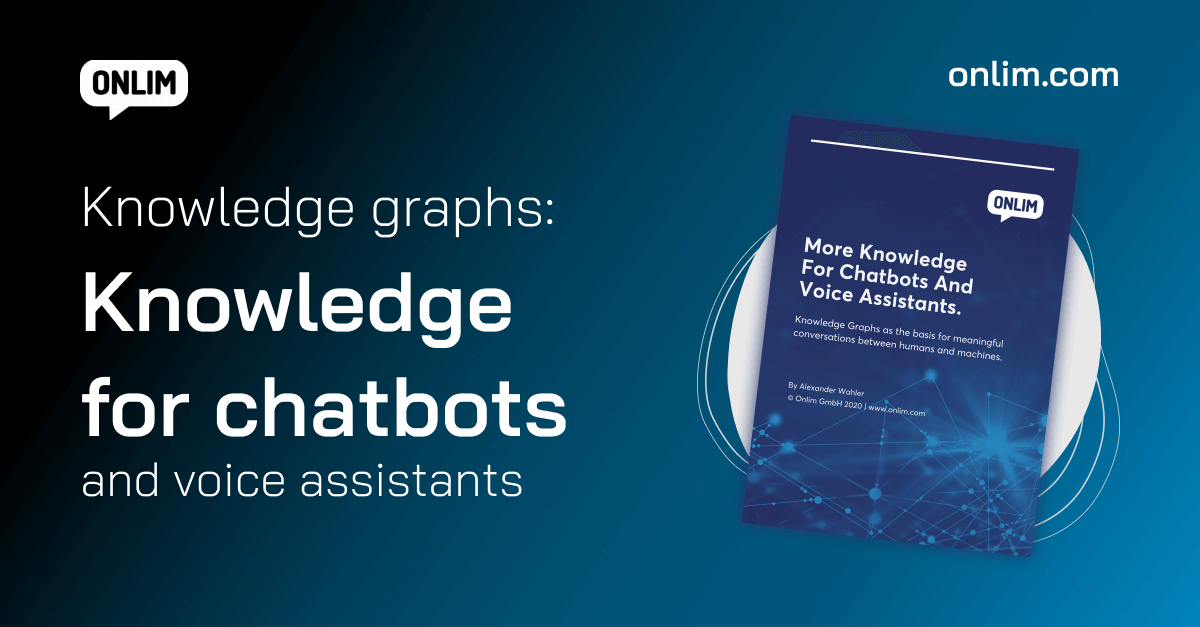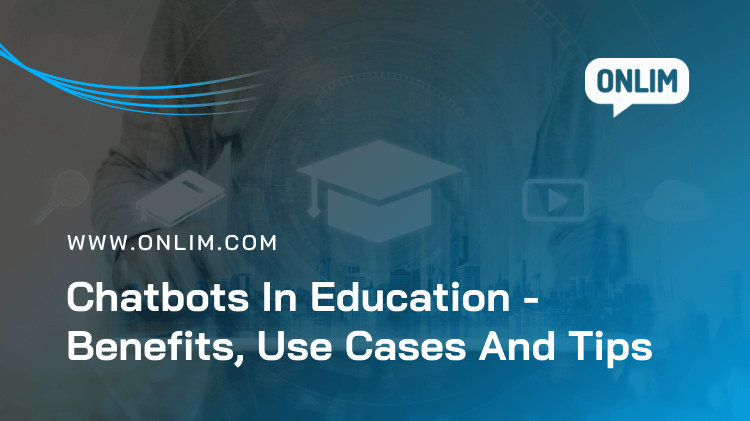Chatbots In Education – Benefits, Use Cases And Tips
At the end of 2020, the Corona crisis still has Europe firmly under control. The second wave is sweeping across the continent and educational institutions in many countries can only partially teach face-to-face or not at all. Digital education undoubtedly experienced a boost in 2020.
However, this is about much more than just online teaching. Educational institutions have to provide their students with digital information, enroll them and support them with ongoing questions and administrative issues. Chatbots can provide effective support in education. How exactly? That’s what we will address in this article.
What challenges do educational institutions face today?
When you think of educational institutions you might primarily think of their core task – teaching and also transferring knowledge.
From an organizational point of view, however, educational institutions must do excellent work in three important areas:
- Provide information and advice to students and interested parties including the educational offer and study programs.
- Service and support for existing students regarding administrative matters and tuition fees, course registrations, course documents, exams, etc.
- Knowledge transfer in (digital) lessons or supported by e-learning and distance learning.
Educational institutions such as universities, technical colleges, and even adult education centers are facing major challenges trying to fulfill these core tasks. Especially in times of the corona pandemic, where personal interaction on site is simply impossible. These challenges include:
- Study services receive numerous inquiries from interested parties via email or telephone. Moreover, long response times can result in frustrated students or lost prospects.
- Study programs are extensive and complex, and a compact presentation on the website is often difficult.
- Students often spend a lot of time looking for relevant information on the educational institution’s website.
- Important information such as changed opening times, room changes, or relevant Covid security measures must be available to students at short notice.
- Lessons and interaction between lecturers and students are often difficult to map out digitally.
What are the advantages of AI-based chatbots in education?
Many of the benefits of an AI-based chatbot for educational institutions are obvious:
- Support for employees: Chatbots can be the first point of contact to receive inquiries on the website and answer frequent questions; complex questions can be passed on to employees.
- Shorter waiting times: the simultaneous servicing of several people by the chatbot results in minimal response times for visitors who receive the desired information immediately.
- 24/7 service: Chatbots offer permanent service availability, day and night, 7 days a week.
- Clear information: Students can proactively receive information from the educational institution at any time, instead of receiving potentially ambiguous information through exchanges between students.
- Documentation of customer inquiries: A chatbot can record all incoming inquiries, which, evaluated for analytical purposes, provide information on the most important customer concerns and questions.
By the way, you can find further benefits of chatbots for companies and users here.
Use cases for chatbots in education
Chatbots can provide effective support in all core functions of educational institutions. They can provide information and advice, but also support study services and knowledge transfer. Therefore, they do not just support employees but also improve the learning experience for students.
These are some of the possible use cases for chatbots in education:
1. Information on the range of courses
A chatbot implemented on the website can quickly answer relevant questions about the courses offered to potential students.
These could be questions such as:
- “What courses does the institution offer?”
- “Is in-person attendance required or are there online courses?”
- “By what date do you have to register for the course?”
- “What are the registration requirements for the specific course?”
- “How does the registration process look like?”
Simple questions can be answered immediately, but in most cases, it may be necessary to obtain more information. Then the chatbot can link directly to the relevant subpage and indicate what information is available there.
Therefore, a chatbot represents a more direct, interactive, and efficient form of an on-site search function. This reduces bounce rates, and a higher percentage of visitors can be converted into students.
2. Administrative support
Existing students must continuously consult the educational institution’s website for up-to-date information. Especially in times of the Covid pandemic, students ask themselves more often:
- “Is the educational institution open next week?”
- “Does this course take place via face2face or distance learning?”
- “Is the library open or closed?”
Students can simply ask these questions through a chat window on the website or via messenger. And the best is that they will get an immediate answer. This will improve the study experience, support employees at the study service, and optimize overall operations for all parties involved.
More Knowledge For Chatbots And Voice Assistants

3. Reminder of tasks/duties
Integrated into the e-learning system, chatbots can also remind students of their upcoming exams and submission dates or registration deadlines. This can be implemented individually for each student depending on the courses taken.
- “The mid-term exam for Introduction to Business Administration will take place on Friday!”
- “The registration period for the advanced courses ends this Sunday at midnight.”
- “You haven’t answered this week’s control questions yet.”
4. Chatbots in the classroom
The heated debate among futurists and education experts about to what extent chatbots can actually be used for teaching continues. Advocates of this approach, of which there are more and more, like to refer to concepts, pilot projects, and research work currently being explored that show potential:
- Chatbots can immediately answer students’ questions about course material and content in a natural language-based conversation.
- Voice assistants can test the knowledge of participants in entertaining multiple-choice quizzes.
- Chatbots can collect participants’ feedback in a standardized and anonymous form after courses. Moreover, they can ask for more detailed information on a case-by-case basis. This means that more meaningful feedback can be obtained.
However, advocates of face-to-face teaching are extremely skeptical about the use of chatbots for teaching purposes. They point out the importance of personal relationships and interactions between lecturers and students.
At Onlim, we are open to all promising fields of application, but we see the topic in a much more pragmatic way: The use of AI-based chatbots in education can provide effective support with administrative tasks such as informing students and massively relieving employees. This frees up valuable human resources in order to create an optimal learning and study experience for students.
Chatbots should never replace lecturers, but rather support them effectively. If possible, chatbots should represent an add-on so that the lessons can be optimized and their efficient implementation guaranteed.
Where to start? Realise the potential of chatbots in education step by step
Educational institutions that decide to introduce an AI-based chatbot should first decide on a specific use case. We advise starting with answering frequently asked questions on the institution’s website.
Chatbots can answer a large number of inquiries automatically. Moreover, they can collect valuable data on the greatest concerns and most frequently asked questions. Implementation is easier, also because fewer company departments have to be involved.
In conclusion, it’s important to gain initial experience with the use of a chatbot. After that, you can for example easily implement further use cases in-house via the Onlim platform. Learn more about our chatbot solution for educational institutions.
Retrieval Augmented Generation (RAG)
July 10th, 2024|
Is a voicebot right for my company?
June 18th, 2024|
What is Generative AI?
June 11th, 2024|



